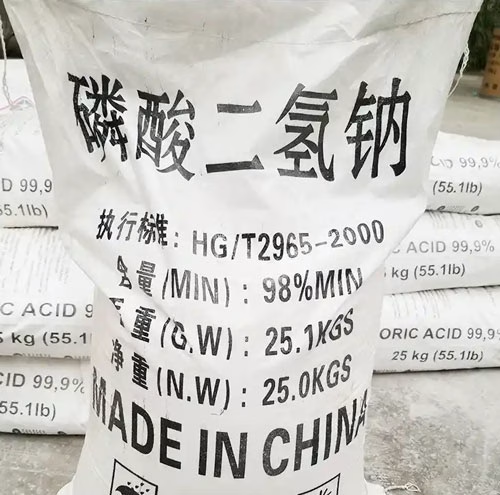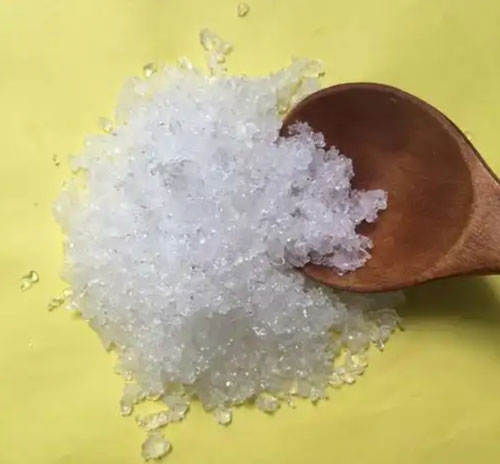I. Introduction
Sodium dihydrogen buffer also called as phosphate buffer, is one of the most widely used buffers in biochemical research.

Sodium dihydrogen phosphate buffer plays a crucial role in many scientific and industrial processes. It is a solution that helps maintain a stable pH environment, which is essential for many chemical reactions and biological processes. This buffer is composed of sodium dihydrogen phosphate (NaH₂PO₄), an inorganic acid salt.
The importance of sodium dihydrogen phosphate buffer lies in its ability to resist changes in pH. When an acid or base is added to a solution containing this buffer, the buffer system reacts to minimize the change in pH. This property makes it invaluable in a wide range of applications, from laboratory experiments to industrial processes and biological research.
II. What is Sodium Dihydrogen Phosphate Buffer?
Composition and mechanism of action of sodium dihydrogen phosphate buffer solution
The main components of sodium dihydrogen phosphate buffer are sodium dihydrogen phosphate (NaH2PO4) and disodium hydrogen phosphate (Na2HPO4). These two components form a buffer pair (H2PO4- and HPO42-) in water that resists pH changes when external acids or bases are added, thus keeping the pH of the solution relatively stable. This mechanism makes sodium dihydrogen phosphate buffer very useful in experiments because it ensures that reactions are carried out at specific pH conditions, avoiding experimental errors due to pH changes

Summary:
- Phosphate buffers are mixed solutions of sodium dihydrogen phosphate (NaH2PO4) and disodium hydrogen phosphate (Na2HPO4).
- These solutions have two pKa values, usually 2.12 and 7.20, which allows them to cover a wide pH range.
- Phosphate buffers of different pH values can be achieved by varying the ratio of these two components. For example, a phosphate buffer of pH 6.8 can be prepared by taking 250 ml of 0.2 mol/L potassium dihydrogen phosphate solution and adding 118 ml of 0.2 mol/L sodium hydroxide solution and then diluting it with water to 1000 ml.
III. Uses of Sodium Dihydrogen Phosphate Buffer
Application Scenarios of Sodium Dihydrogen Phosphate Buffer

- Molecular biology and biochemistry experiments: During DNA/RNA extraction and purification, Sodium Dihydrogen Phosphate buffer can stabilize the pH value of the water, which helps to maintain the normal progress of the reaction.
- Protein electrophoretic separation: In protein electrophoretic separation experiments, Sodium Dihydrogen Phosphate buffer can be used to regulate the pH and ensure that proteins are separated at the correct potential.
- Cell culture: In cell culture experiments, Sodium Dihydrogen Phosphate buffer can be used to adjust the pH of the culture medium to ensure that the cells survive and grow in a suitable environment.
In conclusion, sodium dihydrogen phosphate buffer plays an important role in biochemistry and molecular biology experiments due to its stable pH adjustment ability and wide range of application scenarios.
IV. Formulation Method:
Phosphate buffers of a specific pH can be formulated by precisely controlling the ratio of sodium dihydrogen phosphate to disodium hydrogen phosphate.

The preparation process requires the use of accurate measuring instruments, such as pipettes and volumetric flasks, to ensure the accuracy of the solution concentration.
To prepare 1 mol/L sodium dihydrogen phosphate reservoir: Dissolve 138 g in enough water to make a final volume of 1 L.
To prepare a 1 mol/L storage solution of disodium hydrogen phosphate: dissolve 142 g in enough water to make a final volume of 1 L.
Depending on the desired pH, mix the two reservoirs in specific proportions to obtain sodium phosphate buffers of different pH values.
For example, a phosphate buffer solution of pH 7.2 can be prepared by taking 50 ml of 0.2 mol/L potassium dihydrogen phosphate solution and 35 ml of 0.2 mol/L sodium hydroxide solution and diluting to 200 ml with freshly boiled cold water.
V. Conclusion
Phosphate buffers are widely used in biological research because of their stable pH and good biocompatibility.They are commonly used in a variety of experiments such as cell culture, protein isolation and purification, and nucleic acid extraction.
In practice, care needs to be taken to avoid contact with calcium, magnesium ions and heavy metal ions, as these ions may react with phosphate to form precipitates, affecting experimental results.
Related articles:

